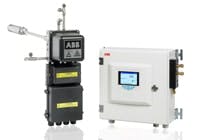ABB has launched a new oxygen and combustibles analyzer for measuring the efficiency of fossil-fired boilers and process heaters used in power generation, incineration, petrochemical and iron and steel production applications. Replacing ABB’s SMA90 system, the AZ40 analyzer incorporates a range of features enabling users to easily and accurately fine-tune their combustion processes to improve efficiency, lower fuel costs and reduced production of nitrogen oxides (NOx).
For optimum combustion to be achieved, there must be sufficient excess air present to burn all the fuel, but not too much to reduce efficiency or increase NOx production. The presence of unburned fuel indicates an inefficient combustion process, as some of the energy in the fuel is being wasted. Unburned fuel also poses a risk to safety. If ignited, an explosion could occur, with potentially disastrous consequences.
Maintaining the correct level of excess air for combustion can be complicated by variations in the fuel and the air, factors including atmospheric pressure and humidity, changes in the heating value of the fuel, and the performance of the boiler plant itself. For this reason, measuring oxygen alone will not provide an accurate picture of combustion efficiency.
By continuously analyzing combustion waste gases to measure both excess air and unburned fuel, the AZ40 enables the correct amount of excess air for optimum combustion to be maintained.
The AZ40 analyzer monitors both the oxygen and the unburned combustibles in terms of carbon monoxide equivalent (COe) using two sensors. The oxygen reading indicates the percent by volume measurement of the net oxygen. Typically, this reading is the primary indicator for combustion control. The COe measurement is often used to optimize combustion control by further trimming the oxygen adjustment.
The analyzer consists of a sensor assembly, probe with filter assembly, transmitter and interconnecting cable assembly.
The sensor assembly flange mounts to a duct or process wall, with the probe extending into the flue gas stream. Available in lengths up to 2,460mm (96.8 inches), and suitable for applications up to 1,650°C (3,000°F), the probe continuously draws in the sample which is then analyzed by the sensor. Electrical outputs from the sensors are fed through the interconnecting flexible cable to the transmitter for interpretation.
The AZ40 analyzer contains an automatic sensor calibration feature which uses test gases of known concentrations to calibrate both sensors and ensure continuous accuracy. Operators have the choice of setting the sensor calibration to run automatically at any time of the day using an internal timer, initiating it manually using the operator interface or remotely through contact inputs.
The AZ40 offers a number of maintenance-saving features aimed at preventing the entry and build-up of ash within the probe. To keep the sample path clear from dust build-up, the AZ40 uses high efficiency filters, based on a ’woven sock’ design, which work by ‘fluttering’ within their protective shields. The resulting movement helps prevent build-up of particulates on the surface of the filter.
An optional blowback feature is also available which can be used to help further prevent clogging of the probe head filter assembly caused by the build-up of process particles. Fully-programmable, the blowback option allows users to set both the duration and frequency of blowback, with the choice of either continuous or multiple air pulses.
Another maintenance-saving feature is the AZ40’s heated sensor manifold. To prevent corrosive gases condensing out in the analyzer sample path and causing a blockage, the sensor manifold is heated to 204°C (400°F), to maintain the sample above its acid dew point.
Added ease of maintenance is provided by the inclusion of advanced diagnostic and verification functions. The electronics package monitors device health through regular self-checks on critical variables, as well as on the device itself. This advanced diagnostic capability allows for the creation of custom alarm schemes and system status notifications. All diagnostic status messages are displayed in accordance with the NAMUR directive NE107 so that any events are instantly recognized by the operator who can then initiate appropriate action if required.
The transmitter also includes an event log that records all calibration and alarm events. Each event is date- and time-stamped enabling the operator or maintenance technician to quickly access the history of an installation.
Simplified operation is ensured by the AZ40’s user interface, which shares the same look and feel as ABB’s other instruments and analyzers. A six button tactile keypad for menu navigation and data input, combined with an intuitive menu structure, enables users to quickly and easily access, program and adjust settings and operational data from one screen.





